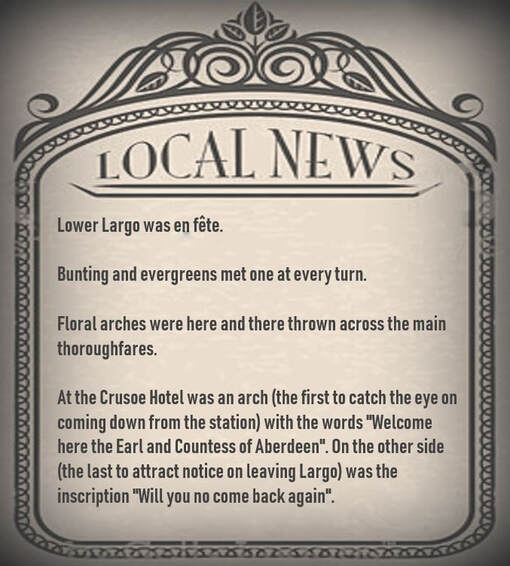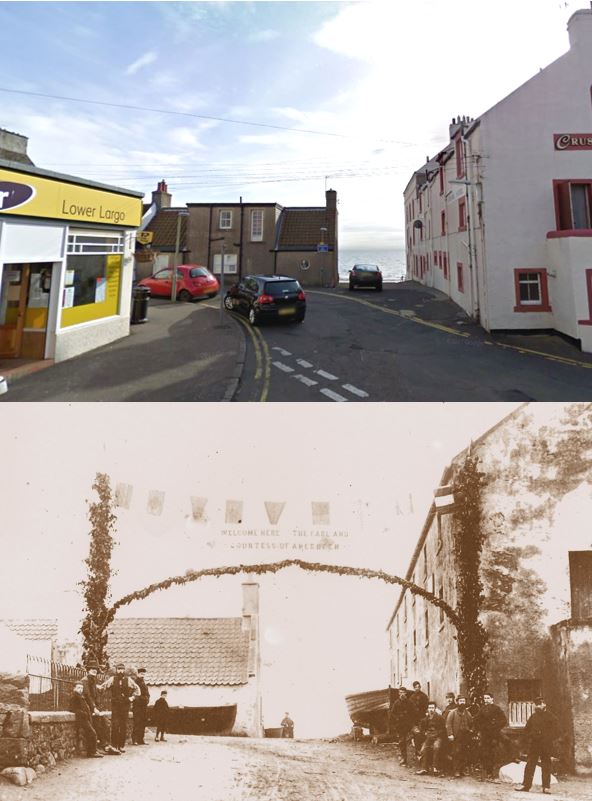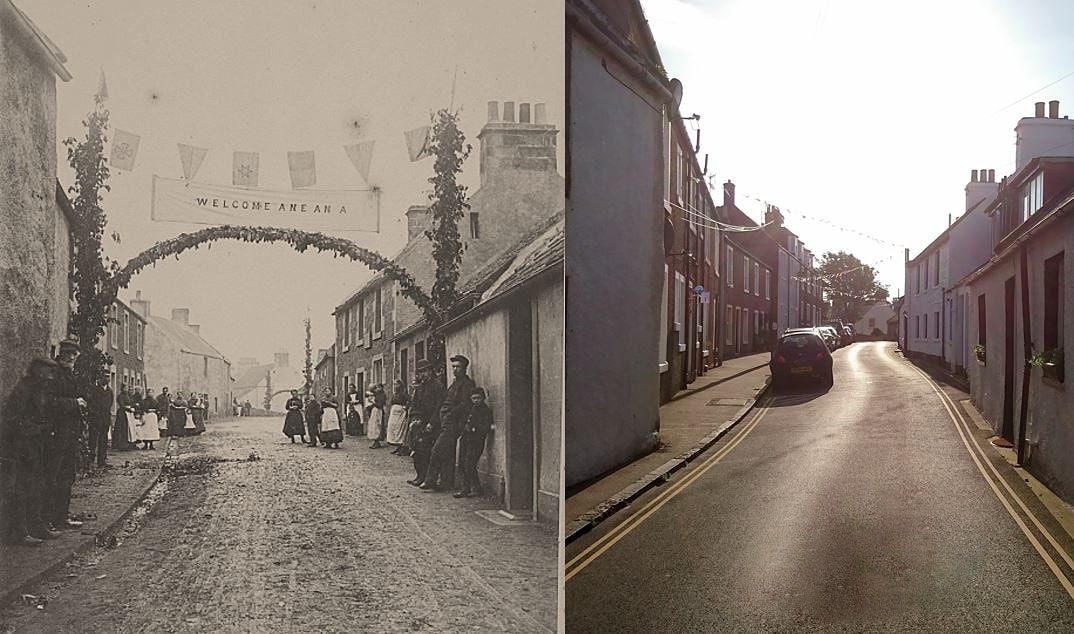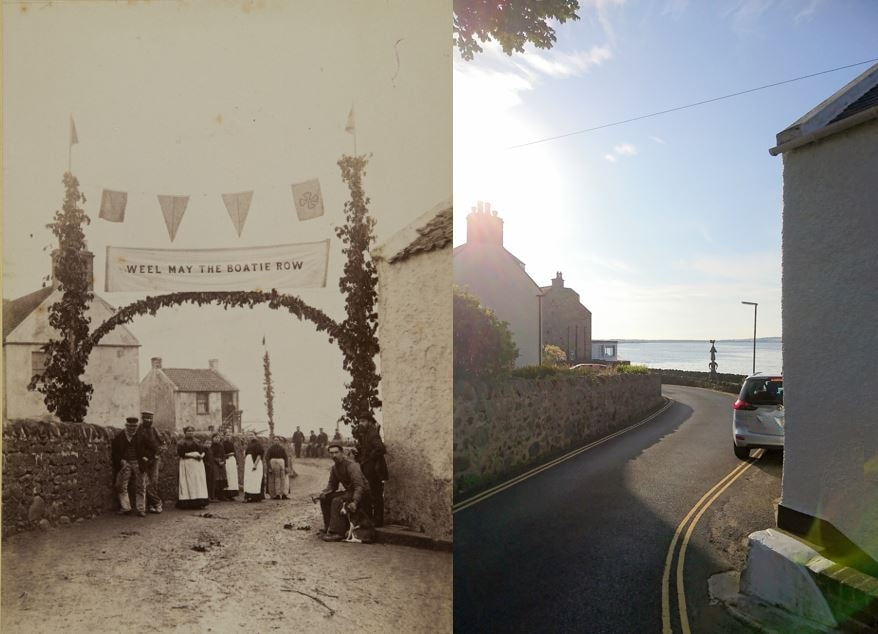"On the other arches were displayed such mottoes as "Weel may the Boatie Row" - a song which has special application to Largo; "Labour always conquers"; "Robinson Crusoe now we see, good and great at last"; and "May Cardy Works Flourish". A temporary platform, covered with evergreens, was erected in front of "Crusoe's Cottage" and there the ceremony of the day took place".
Such a special occasion demanded the presence of a high class photographer and John Terras of Markinch provided this service. Many images of the day have been preserved but this post and the next focus on a series of images of the parade route and its arches and mottoes. What has changed along the route since 1885?
There are a few differences at the very start of the processional route. Notably, the boats once frequently hauled up onto the street have long since been replaced by cars. The house through the archway has undergone significant remodelling. The convenience shop sits where the garden of Alexandra House once was. In spite of these changes, however, it's still a recognisable view - mainly thanks to the Crusoe Hotel on the right hand side and the slipway down to the beach.
The next 'then and now' location shows the old manse at 23 Main Street on the left while the two-storey building on the right (framed by the arch) is 'Berwick View'. Here was the business of Alexander Simpson, who was a shoemaker in 1881 but a grocer by 1891. His shop sign is visible in the 1885 photograph. Inch View Cottage lies beyond that on the right. In the old image, Butters Buildings can be seen through the arch on the left (lighter coloured building). The people standing watching the photographer include men, apron-ed women, children and babies in arms.
A little further east from the first location, another banner was positioned. This time at the bend in the street where White Cottage sits on the right. On the left is the gable end of 57 Main Street (then known as No 1 Seaview). On the 1885 photo, in the centre behind the arch is a quaint old house that was known as 'The Castle'. Little did the occupants of this little house know then that this building's days were numbered. Several years later this property was swept away in a violent storm.
A severe north-easterly gale intensified on 18 October 1898. The Scotsman that day described how the sea rose to a "tremendous height" and how huge waves had breached the sea wall at Kirkcaldy. The next day's Courier spoke of havoc on Kirkcaldy High Street which was "strewn with large blocks of stone, wood and other debris". Several vessels had been driven ashore along the east coast and it was even said that trains on the Forth Bridge were in danger of being blown from the rails. The St Andrews Citizen of 22 October had the headline "The Terrible Gale: Great Destruction of Property on the Fife Coast" and noted that "a few of the houses close to the sea have washed away all together". The shops at 52-56 Main Street were not built until 1887 and so do not feature in the parade photograph.
To be continued.....




 RSS Feed
RSS Feed
